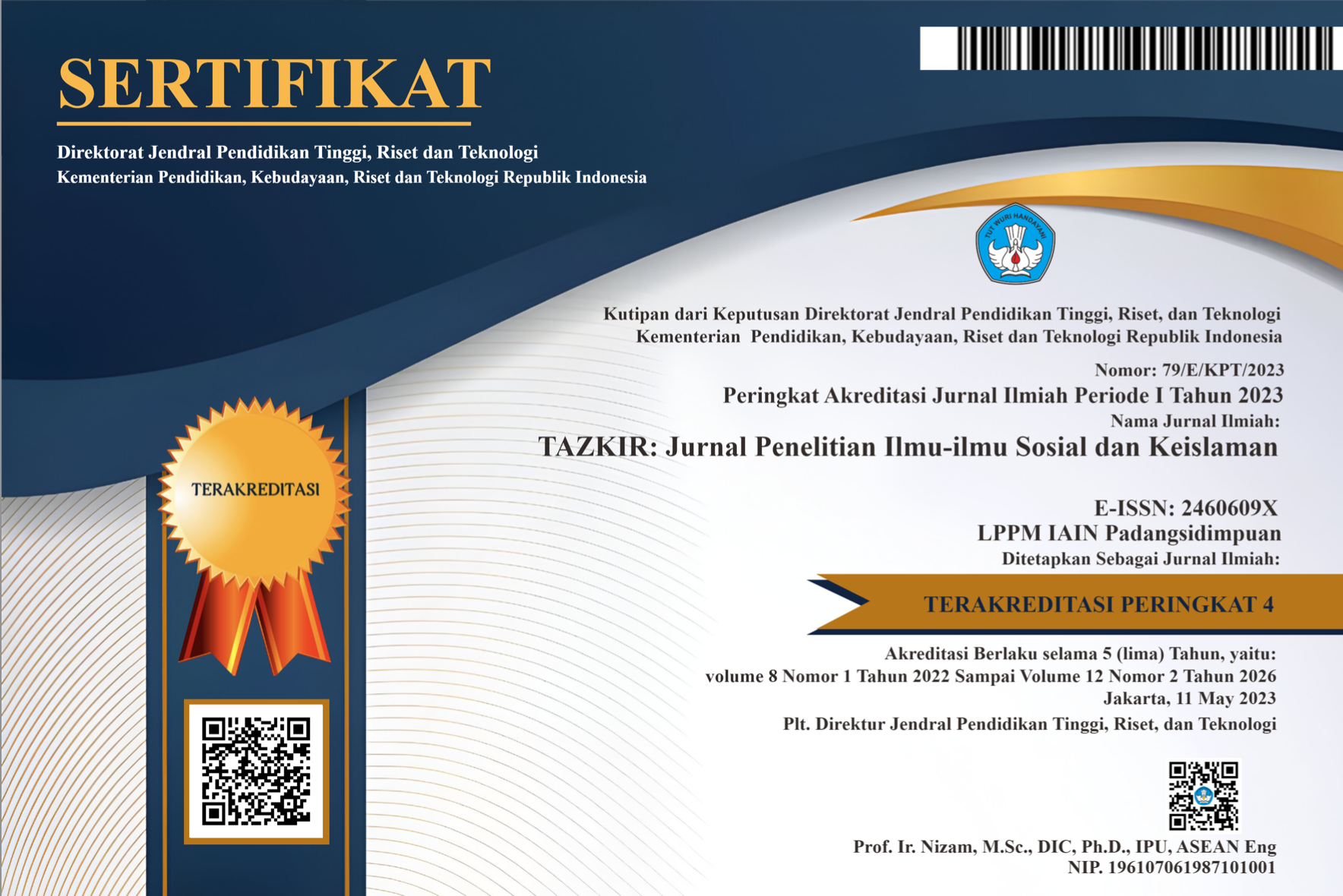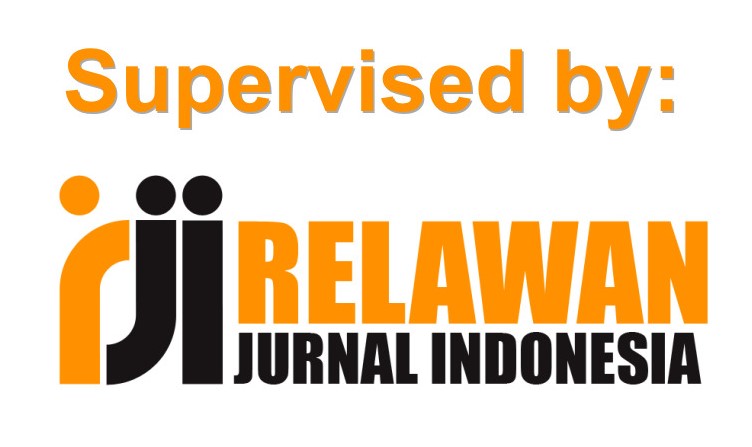Keterlibatan Amerika Serikat dan Iran dalam Konflik Di Suriah Pasca Arab Spring
Abstract
Keywords
Full Text:
PDF [INDONESIA]References
ABM, M. Agastya. (2013) Arab Spring: Badai Revolusi Timur Tengah yang Penuh Darah. Yogyakarta: IRCiSoD.
Badawi, Samer. (2019) "The Arab Spring and The Challenge of Nation-Building." Constitutional Rights Foundation 34 (4): 1-4.
BBC. n.d. Konflik Suriah. https://www.bbc.com/indonesia/majalah-50515089.
—. n.d. Why is there a war in Syria. Accessed April 22, (2020). https://www.bbc.com/news/world-middle-east-35806229.
Brownlee, Jason, Tarek Masoud, and Andrew Reynolds. (2015). The Arab Spring: Pathways of Repression and Reform. Oxford University Press.
CFR. n.d. Civil War in Syria. Accessed April 24, 2020. https://www.cfr.org/interactive/global-conflict-tracker/conflict/civil-war-syria.
Colaresi, Michael, and William R. Thompson. (2002) "Strategic Rivalries, Protracted Conflict, and Crisis Escalation." Journal of Peace Research. https://journals.sagepub.com/doi/abs/10.1177/0022343302039003002. 39 (3): 263–287.
Cragin, R. Kim. (2015) "Semi-Proxy Wars and U.S. Counterterrorism Strategy in Studies Conflict & Terrorism." Studies in Conflict & Terrorism. https://doi.org/10.1080/1057610X.2015.1018024. 35 (8): 311-327.
Dacrema, Eugenio. (2019) "Syria in the New Middle East: The Fate of a War-Torn Country." In Rebuilding Syria: The Middle East’s Next Power Game, by Eugenio Dacrema and Valeria Talbot, 5-30. Milan: Ledizioni Ledi Publishing.
EASO. (2019) "Syria Actors." European Asylum Support Office 4-5.
Fahham, A.Muchaddam, and A.M. Kartaatmaja. (2014) "Konflik Suriah: Akar Masalah Dan Dampaknya." Jurnal Politica. https://dprexternal3.dpr.go.id/index.php/politica/article/view/332. 5 (1): 37-60.
Fox, Amos C. (2019) "Conflict and the Need for a Theory of Proxy Warfare." Journal of Strategic Security. https://www.jstor.org/stable/26623077?seq=1#metadata_info_tab_contents. 12 (1): 44-71.
Hughes, Geraint Alun. (2014) "Syria and the Perils of Proxy Warfare." Small Wars & Insurgencies. https://doi.org/10.1080/09592318.2014.913542. 25 (3): 515-545.
Loveman, Chris. (2002) "Assessing the phenomenon of proxy intervention". Conflict, Security & Development. https://doi.org/10.1080/14678800200590618. 2 (3): 29-48.
Marshall, Alex. (2016) "From Civil War to Proxy War: Past History and Current Dilemmas." Small Wars & Insurgencies. https://doi.org/10.1080/09592318.2015.1129172. 27 (2): 183-195.
Moehnilabib, and dkk. (1997) Dasar-dasar Metodologi Penelitian. Malang: Lembaga Penelitian IKIP Malang.
Morgenthau, Hans J., and Kenneth W. Thompson. (2010) Politik Antarbangsa. Translated by S. Maimoen, A.M. Fatwan and Cecep Sudrajat. Jakarta: Pustaka Obor Indonesia.
Mudore, Syarif Bahaudin, and Nurlaila Safitri. (2019) "Dinamika Perang Suriah: Aktor dan Kepentingan." POLITEA: Jurnal Kajian Politik Islam. https://journal.uinmataram.ac.id/index.php/politea/article/view/1437. 2 (2): 68-92.
Mueller, Karl P., Becca Wasser, Jeffrey Martini, and Stephen Watts. (2017) "U.S. Strategic Interests in the Middle East and Implications for the Army." Perspectives. https://apps.dtic.mil/sti/citations/AD1053258. 1-16.
Mumford, Andrew. (2013) "Proxy Warfare and the Future of Conflict." The RUSI Journal. https://doi.org/10.1080/03071847.2013.787733. 158 (2): 40-46.
Mustahyun. (2017) "Rivalitas Arab Saudi Dan Iran Di Timur Tengah Pada Arab Spring Suriah Tahun 2011-2016." Journal Islamic World and Politics. https://journal.umy.ac.id/index.php/jiwp/article/view/3767. 1 (1): 90-110.
Mustofa, Ahmad Zainal. (2020) Perang Proksi Amerika Serikat dan Iran dalam Politik Global Pasca Arab Spring. Yogyakarta: Tesis UIN Sunan Kalijaga. https://digilib.uin-suka.ac.id/id/eprint/45778/
Peters, Joel. (2012) The European Union and The Arab Spring: Promoting Democracy and Human Rights in the Middle East. Maryland: Lexington Books.
Piotrowski, Marcin Andrzej. (2011) "Iran’s Reactions to the Arab Spring and the Crisis in Syria." Polish Institute of International Affairs 316 (99): 596-597.
Sahide, Ahmad. (2019) The Arab Spring: Tantangan dan Harapan Demokratisasi. Jakarta: Kompas.
Sanadiki, Omar. n.d. The War in Syria in 2019: Winners, Losers and Shifting Alliances. https://www.inss.org.il/event/the-war-in-syria-of-2019-winners-losers-and-shifting-alliances/.
Strategic Comments (2019). " The US withdrawal from Syria, trategic Comments, 2." The International Institute for Strategic Studies. https://doi.org/10.1080/13567888.2019.1580960. 25 (1).
Tempo.co. (2018 "Ini Tujuan Rusia, Turki, dan Iran dalam Perang 7 Tahun di Suriah". https://dunia.tempo.co/read/1076699/ini-tujuan-rusia-turki-dan-iran-dalam-perang-7-tahun-di-suriah/full&view=ok.
Tempo.co. (2018) "Militer Amerika Serikat Ada di Suriah Sampai 3 Tujuan Tercapai". https://dunia.tempo.co/read/1080021/militer-amerika-serikat-ada-di-suriah-sampai-3-tujuan-tercapai/full&view=ok.
Towle, Philip. (1981) "The Strategy of War by Proxy." The RUSI Journal 126 (1): 21-26.
Wezeman, Pieter D. (2014) Restricting Arms Supplies to Syria. Oxford University Press.
Yusuf, A. Muri. (2014) Metode Penelitian: Kuantitatif, Kualitatif dan Penelitian Gabungan. Jakarta: KENCANA.
DOI: https://doi.org/10.24952/tazkir.v7i2.4534
Refbacks
- There are currently no refbacks.
Copyright (c) 2021 Tazkir : Jurnal Penelitian Ilmu-ilmu Sosial dan Keislaman

This work is licensed under a Creative Commons Attribution-ShareAlike 4.0 International License.



